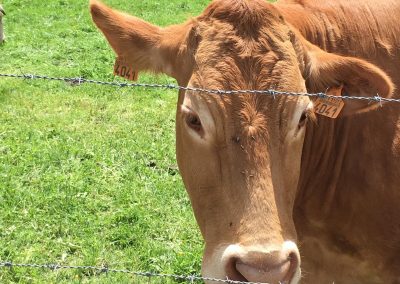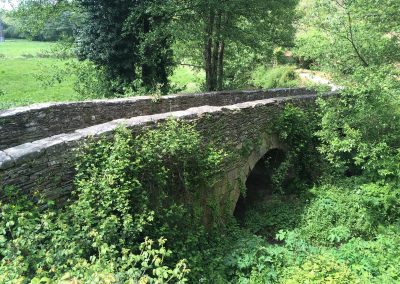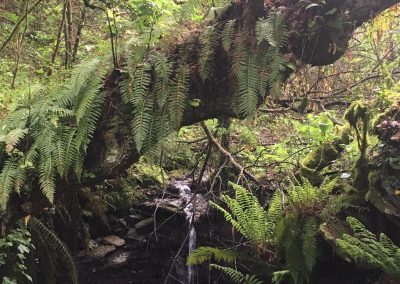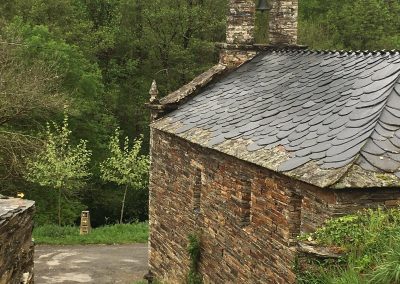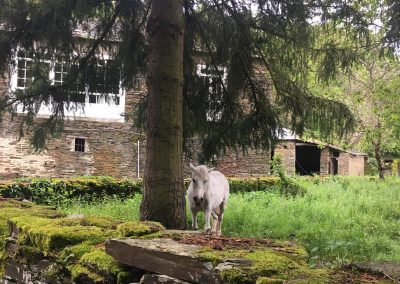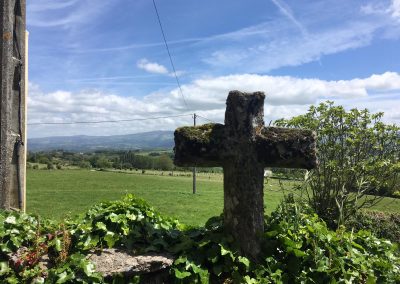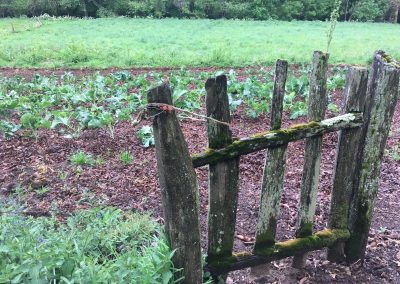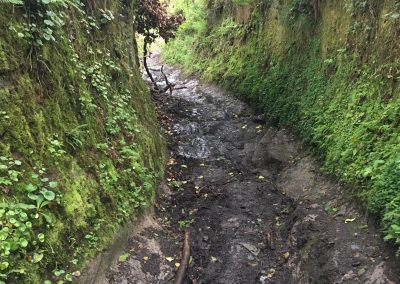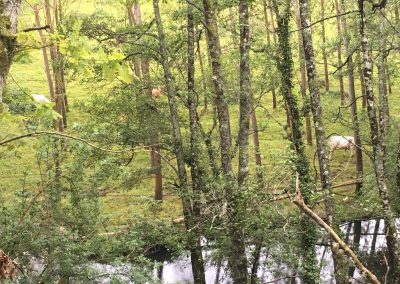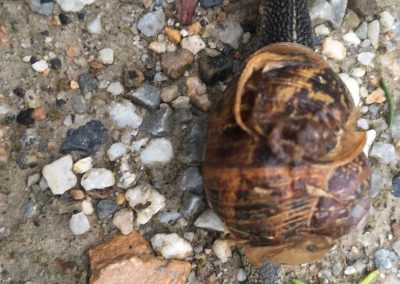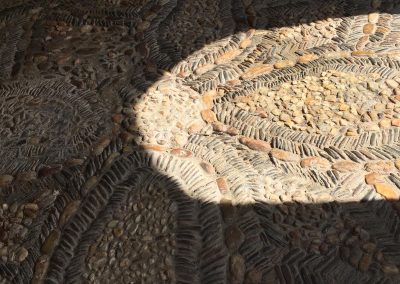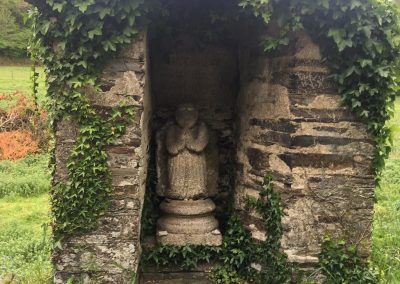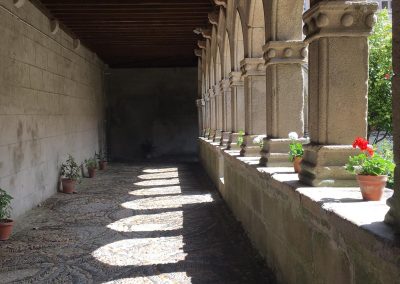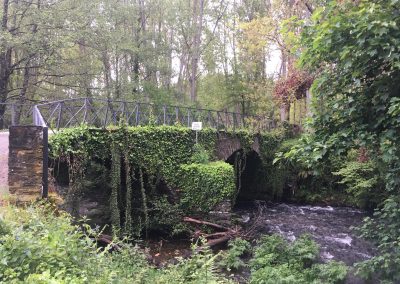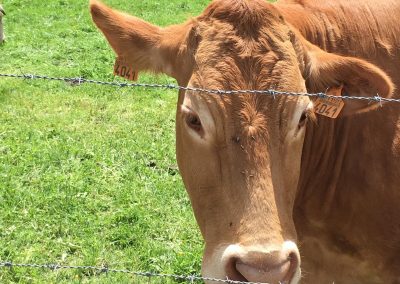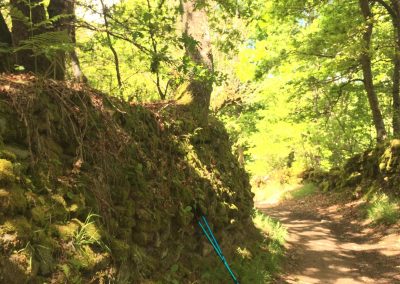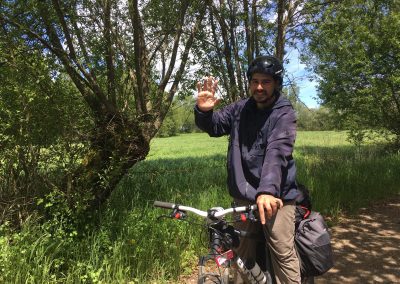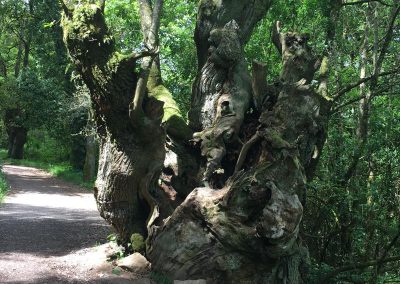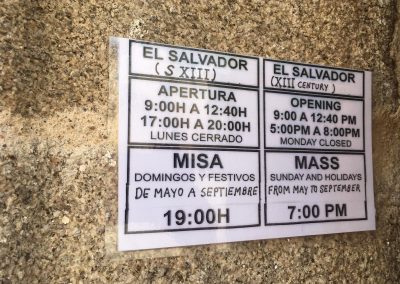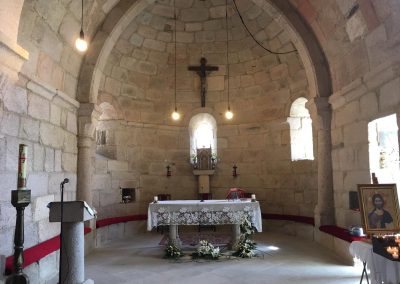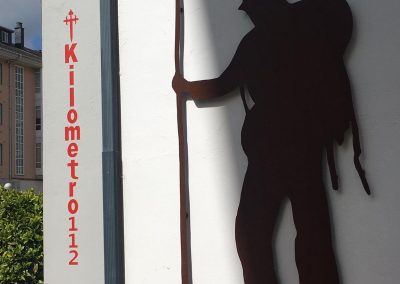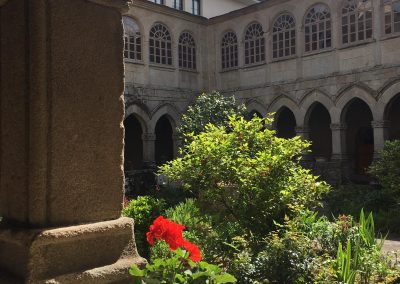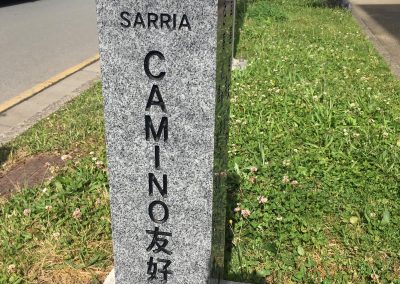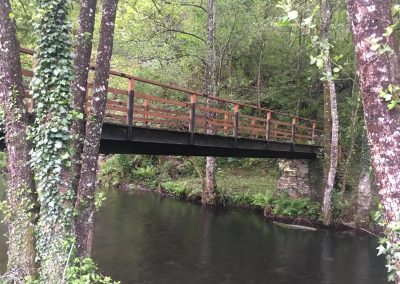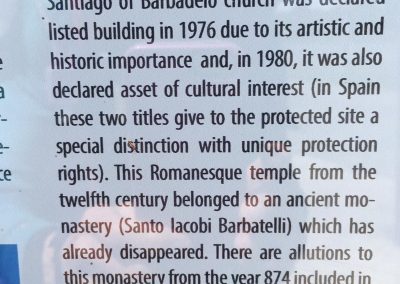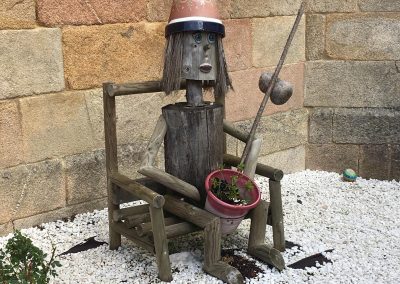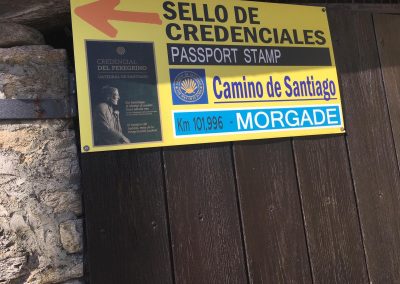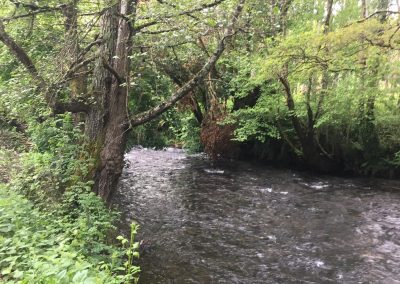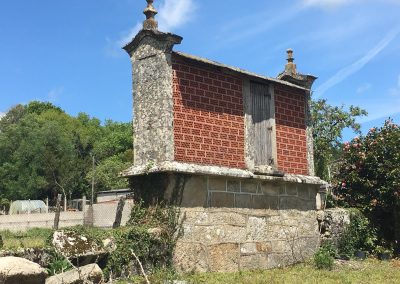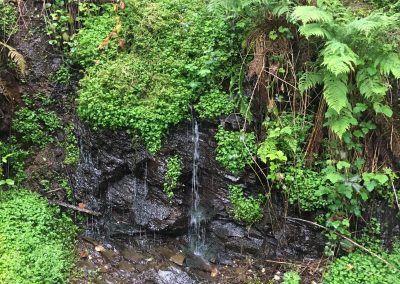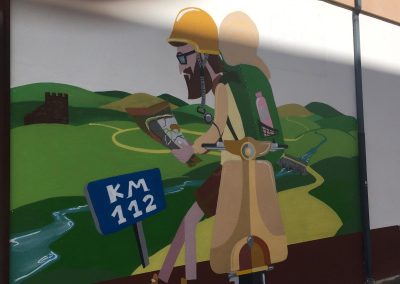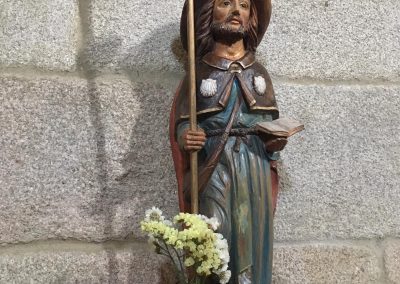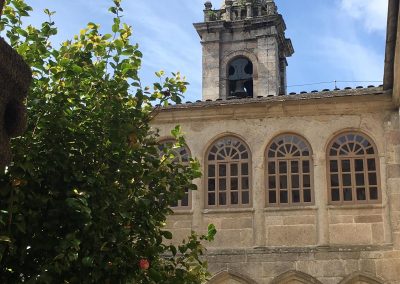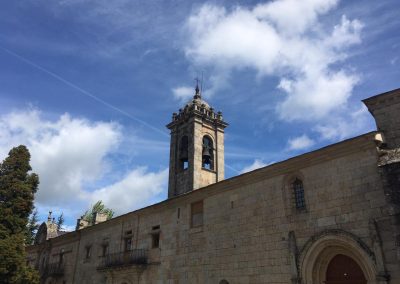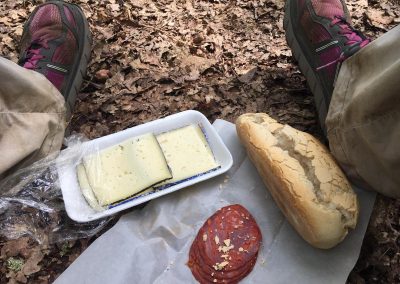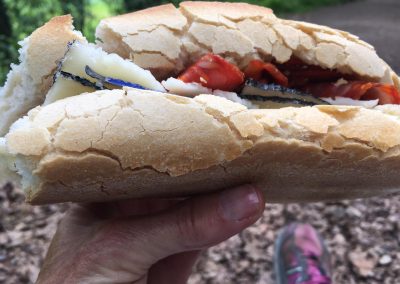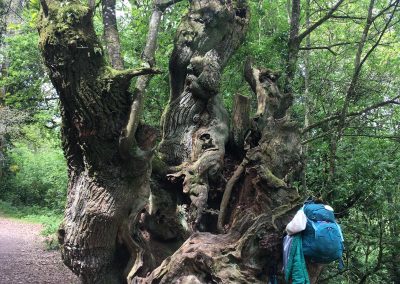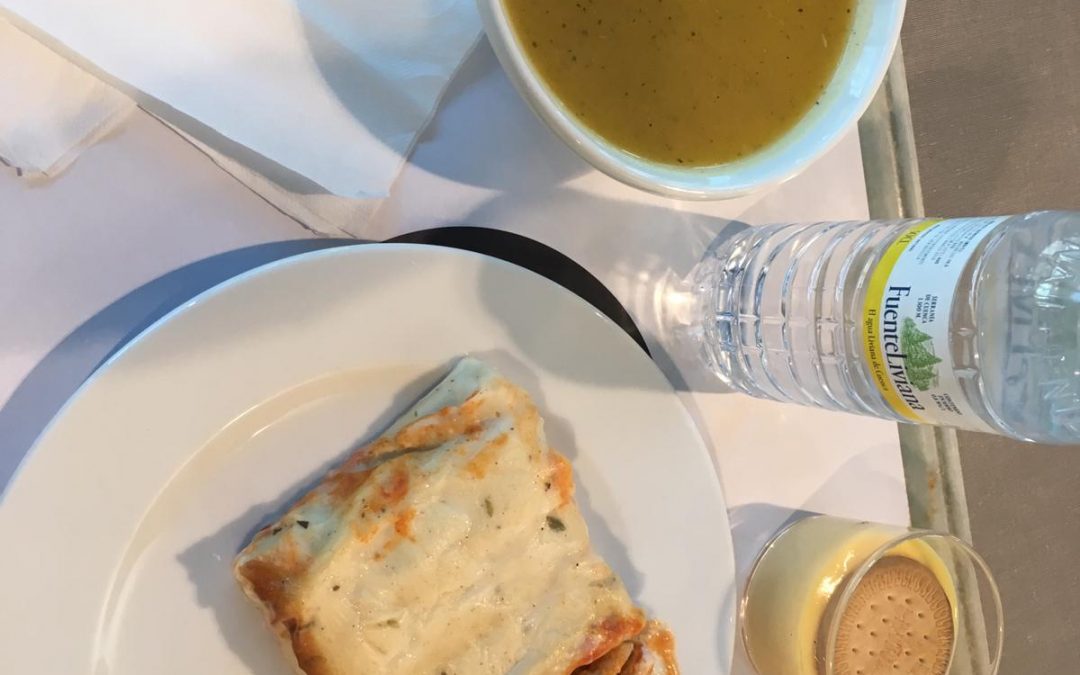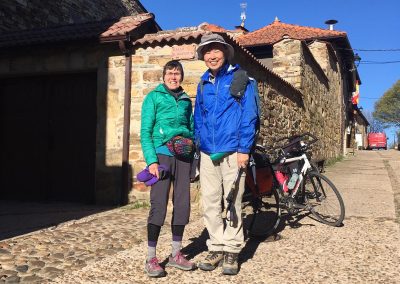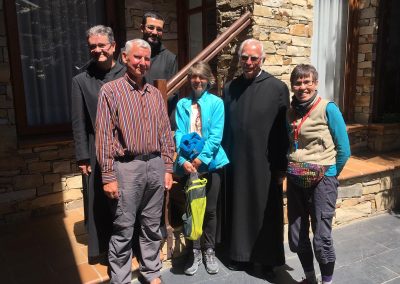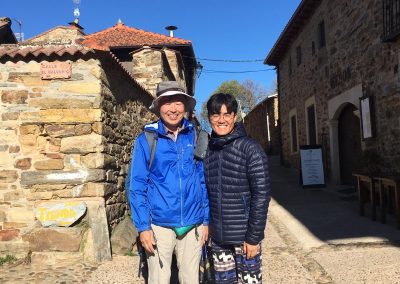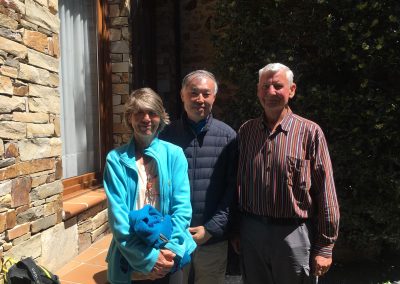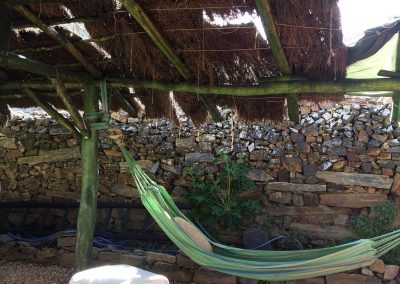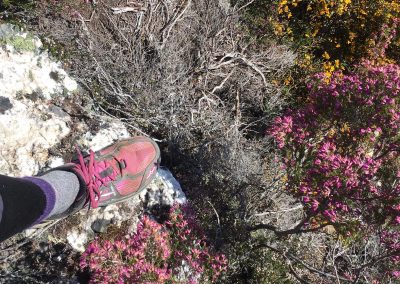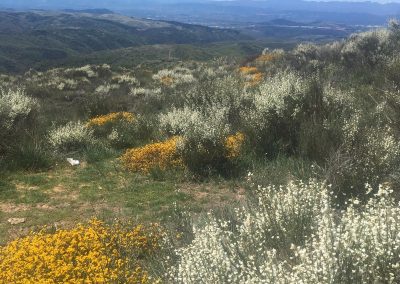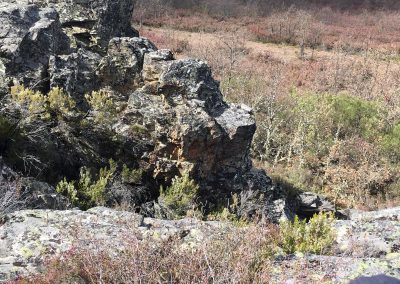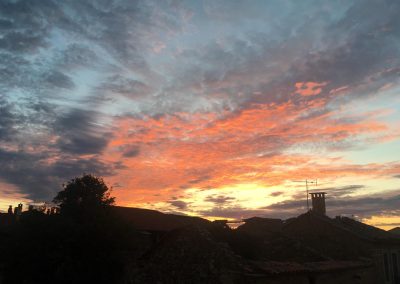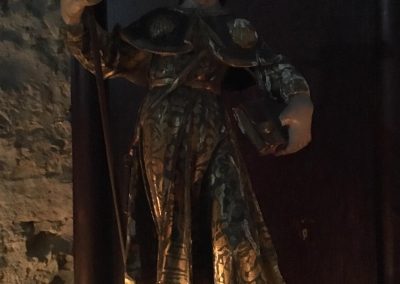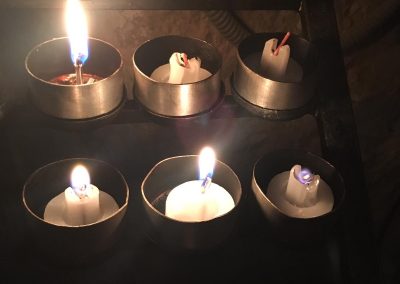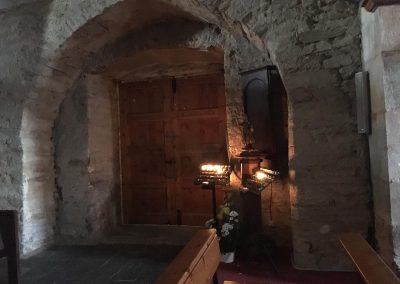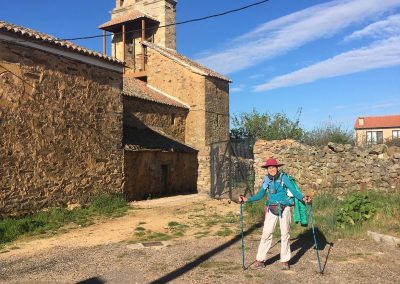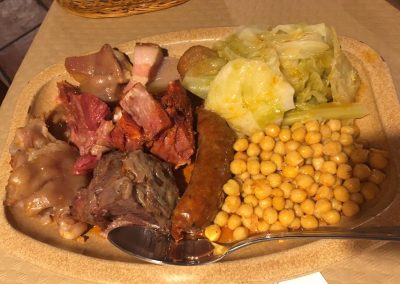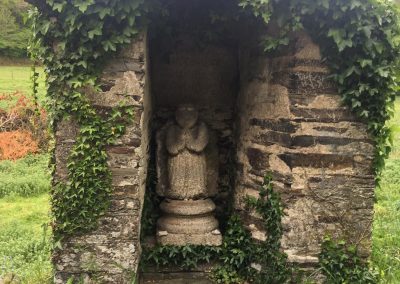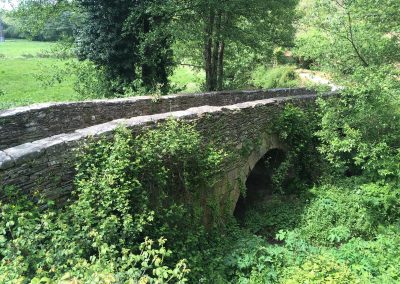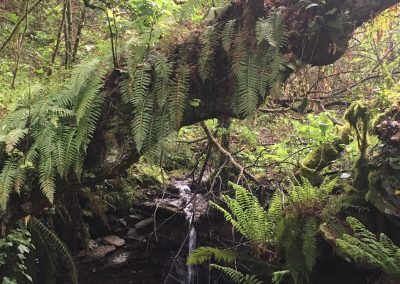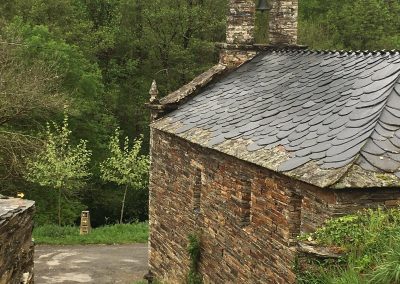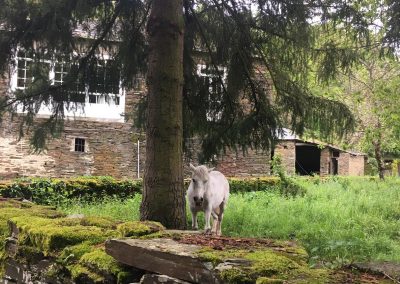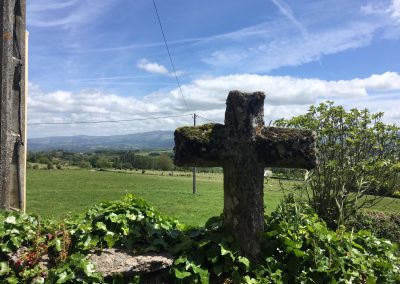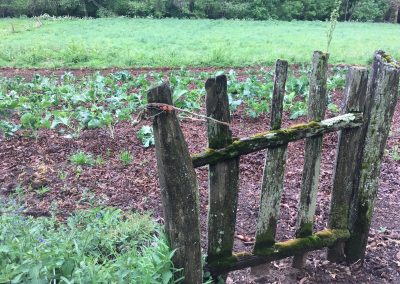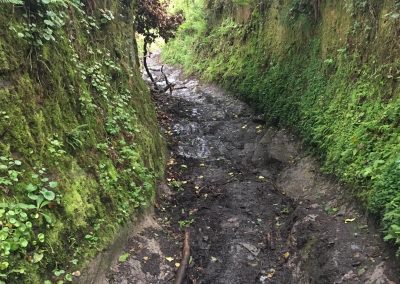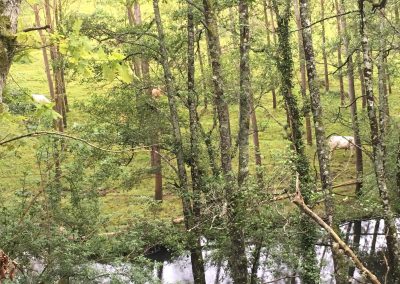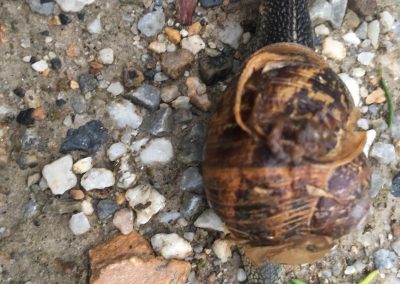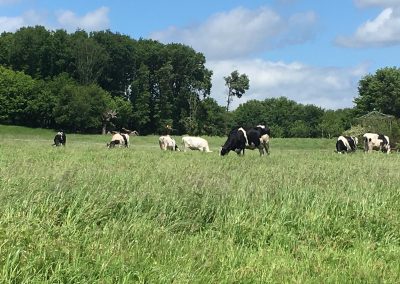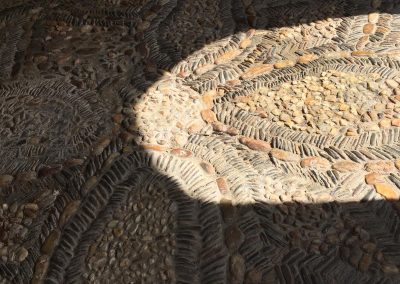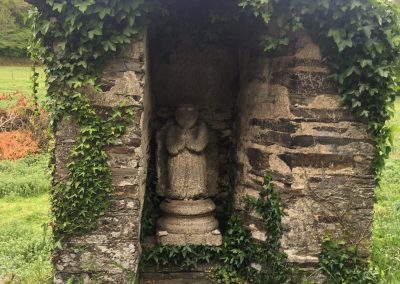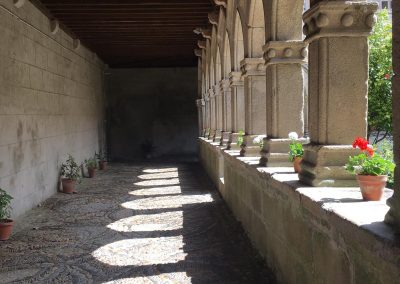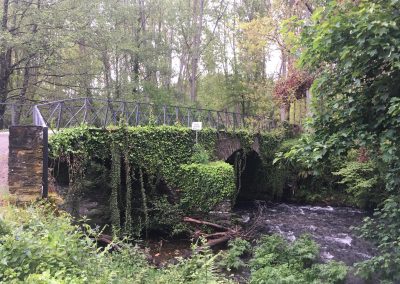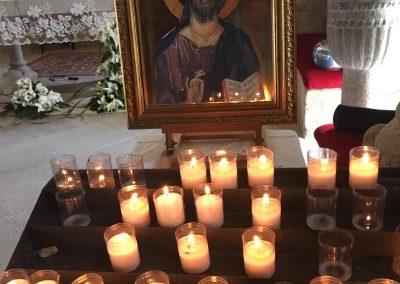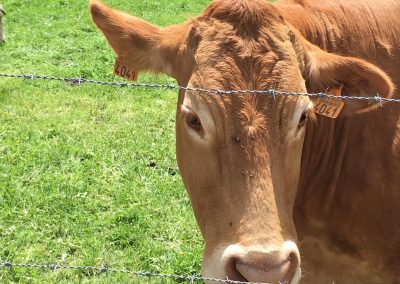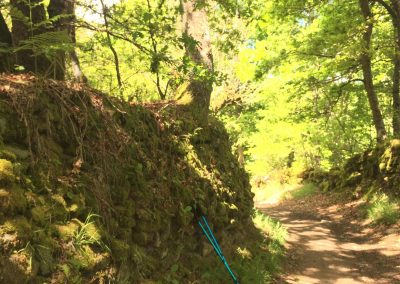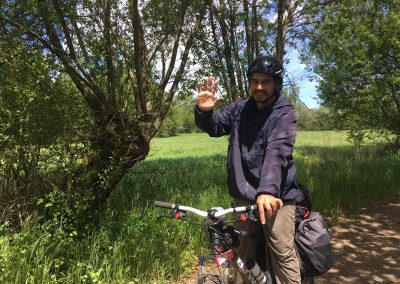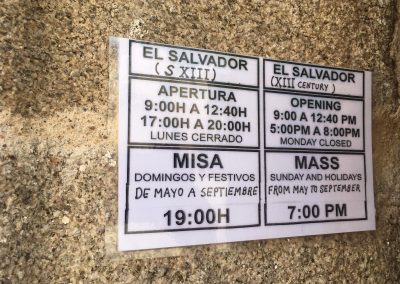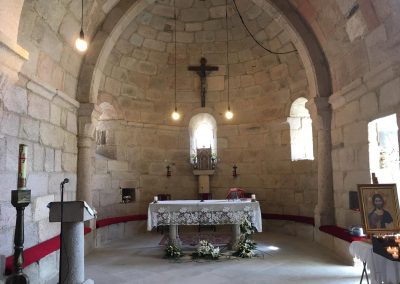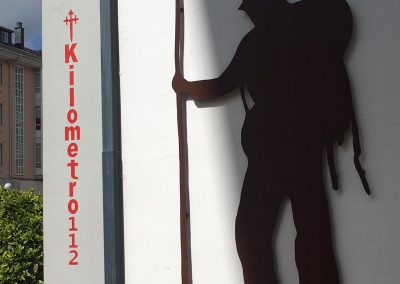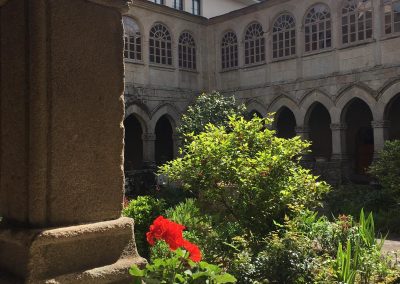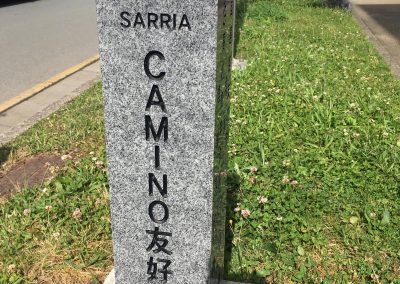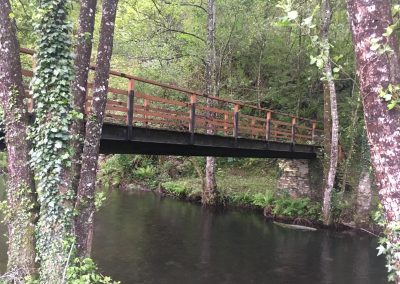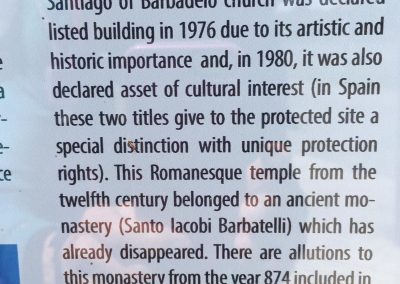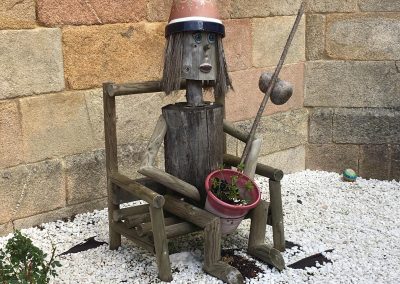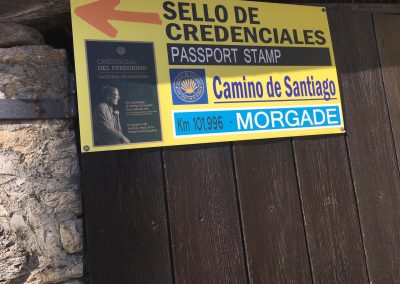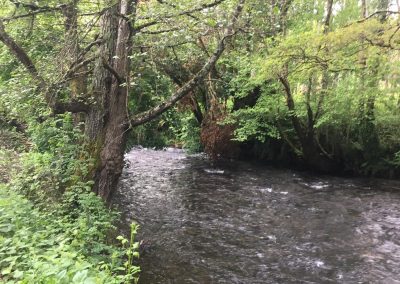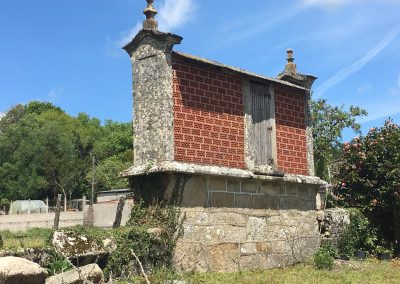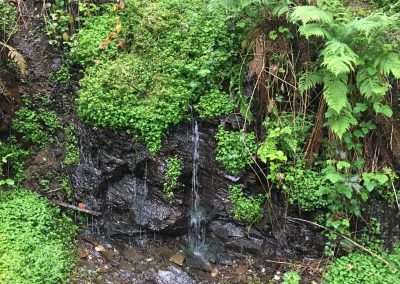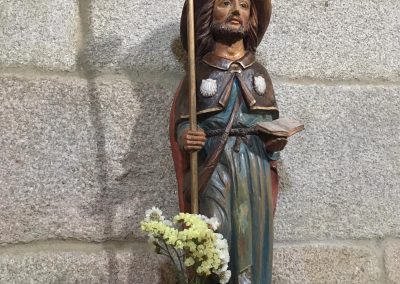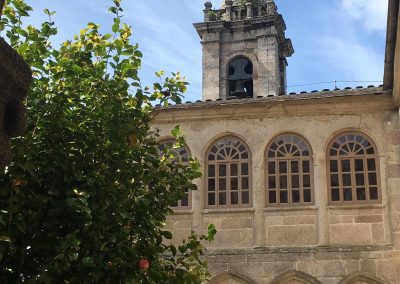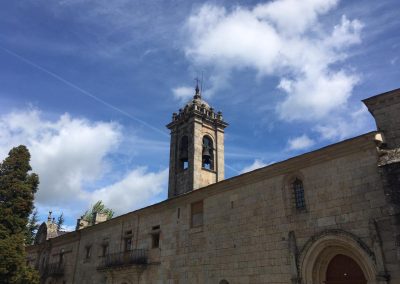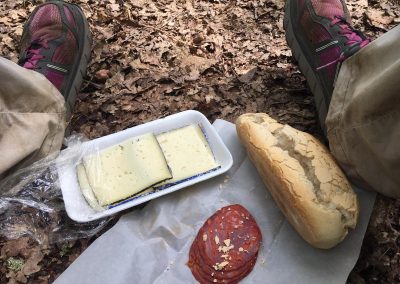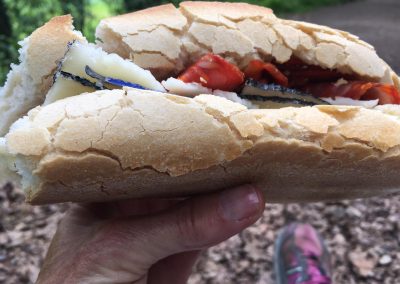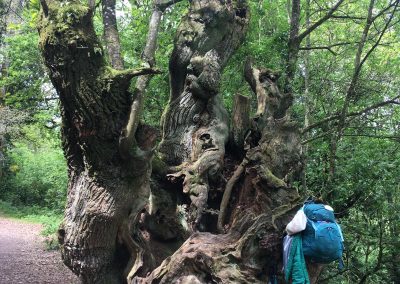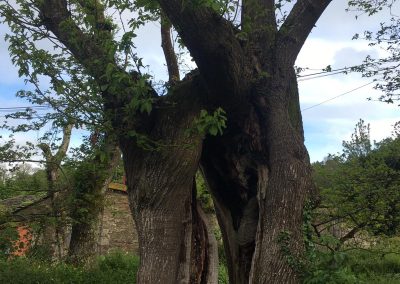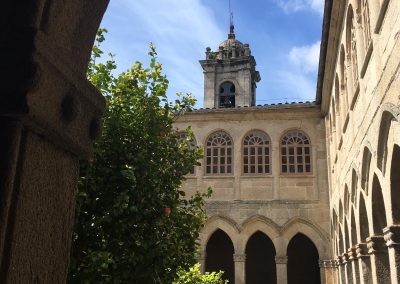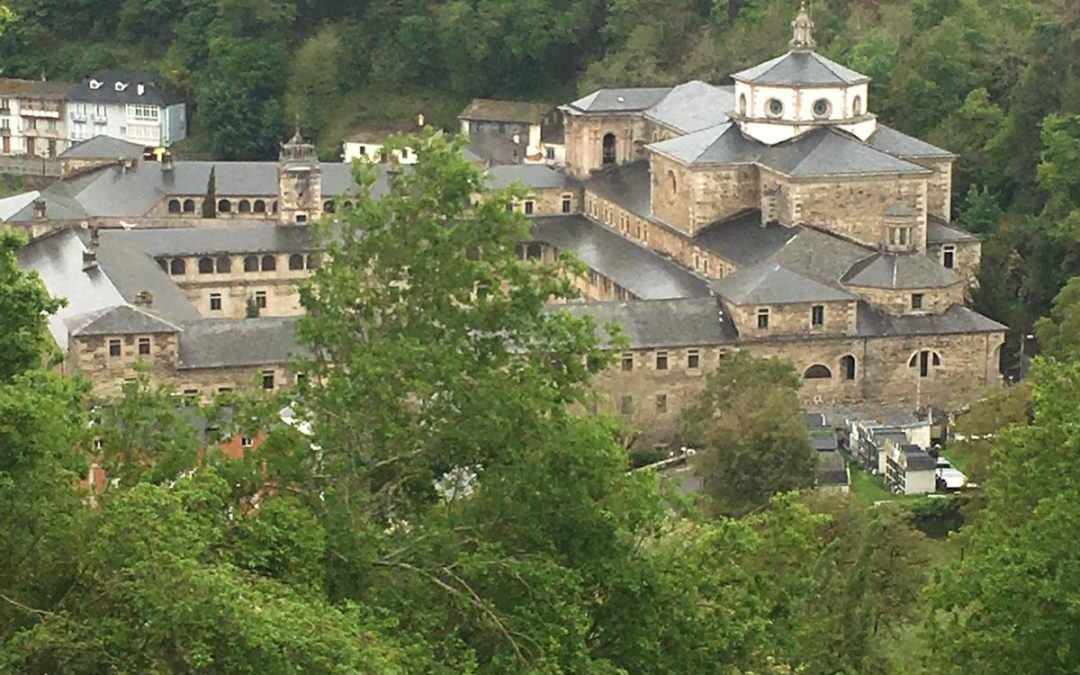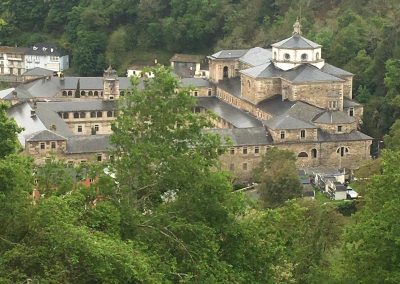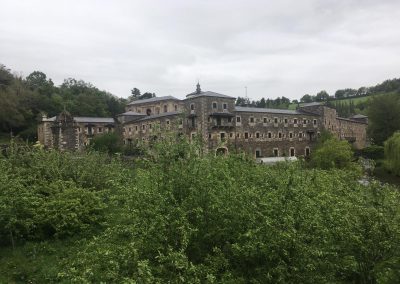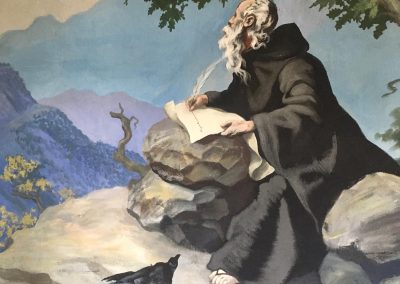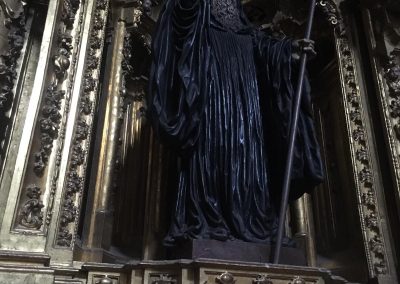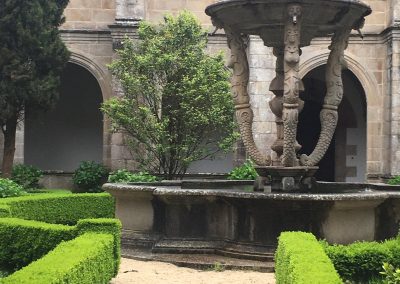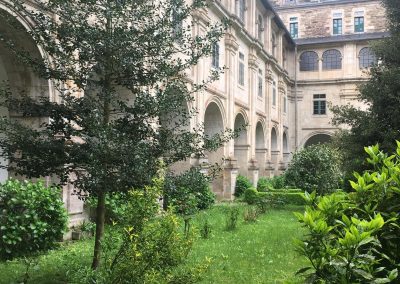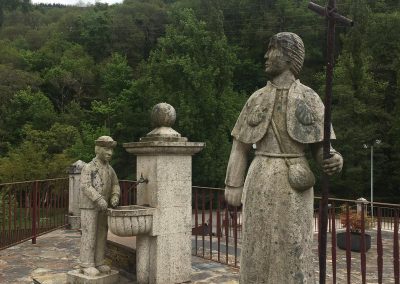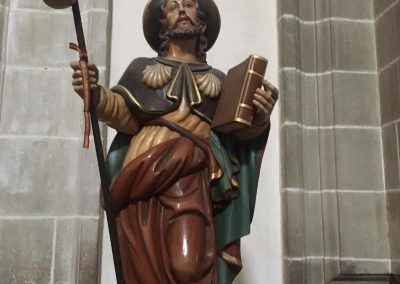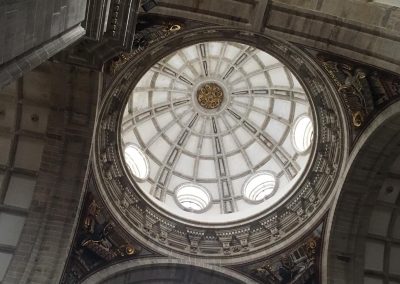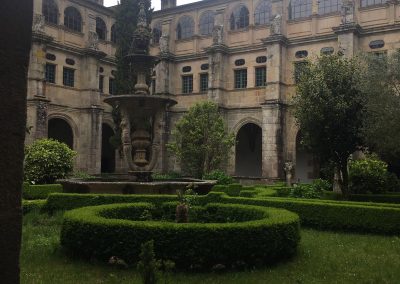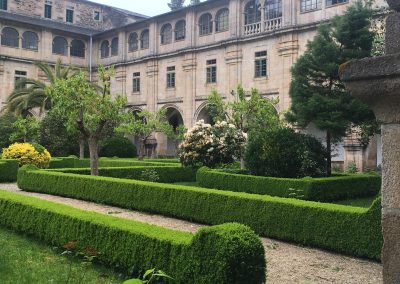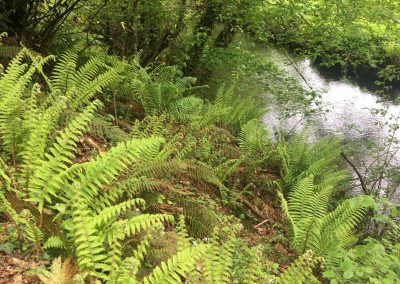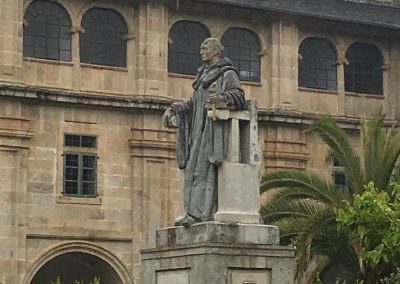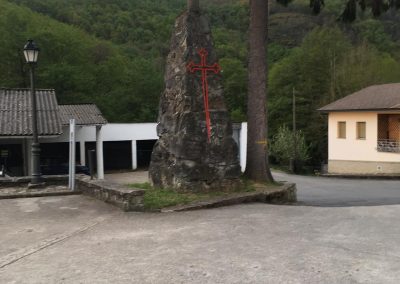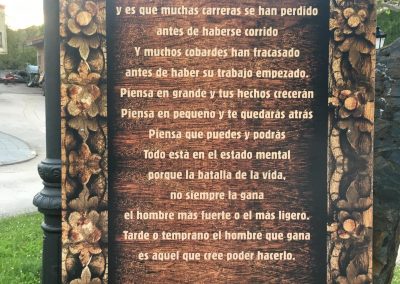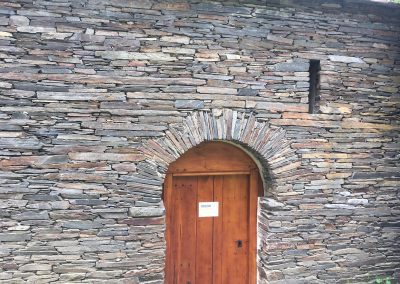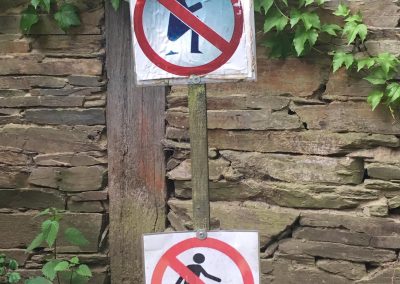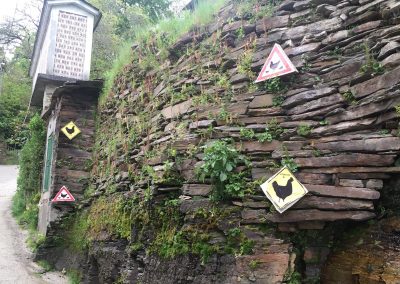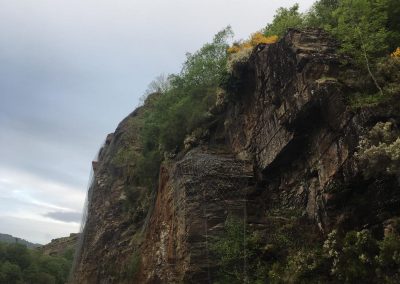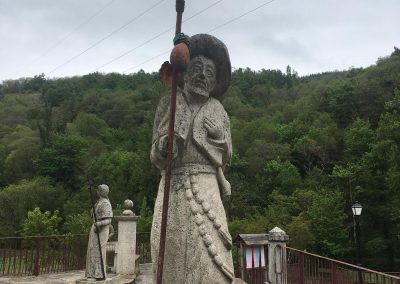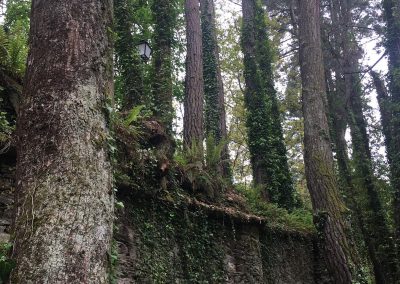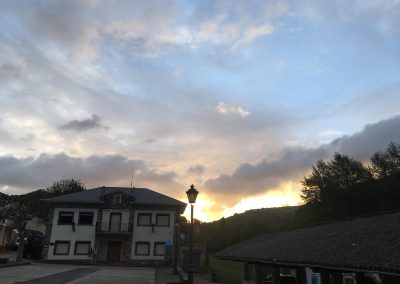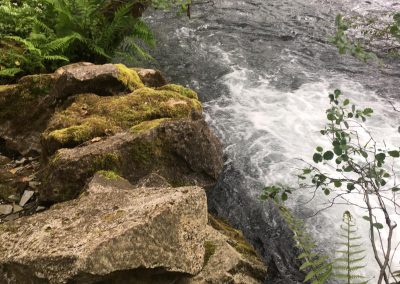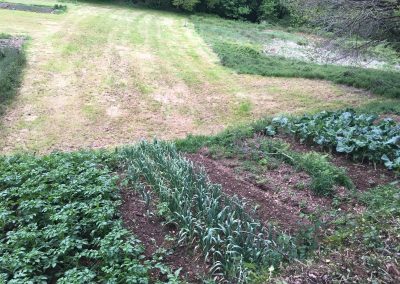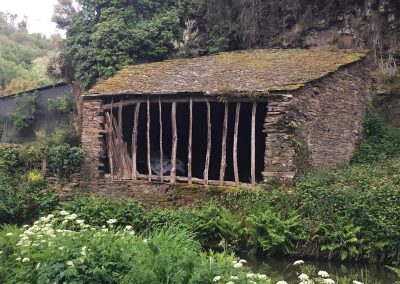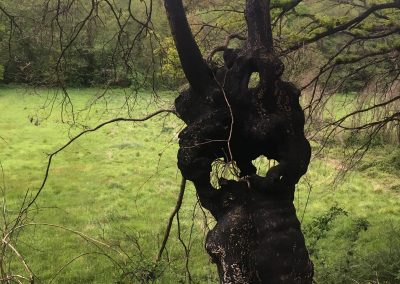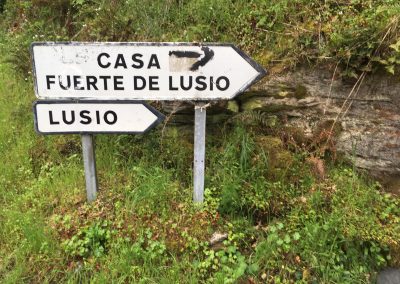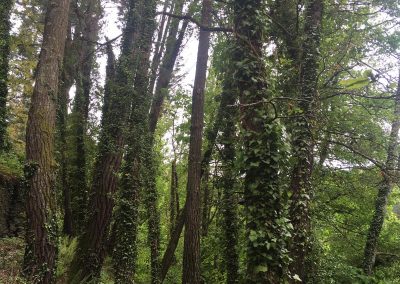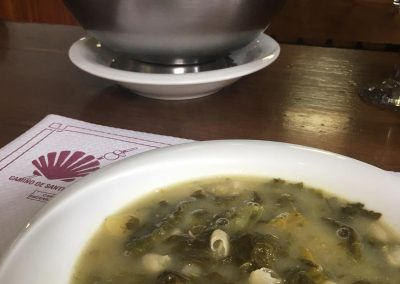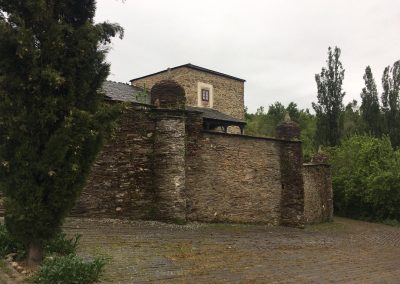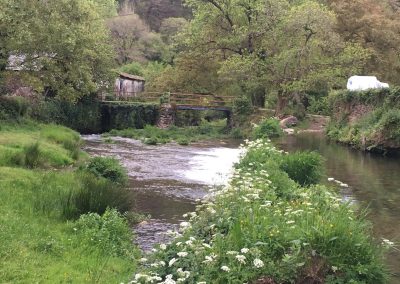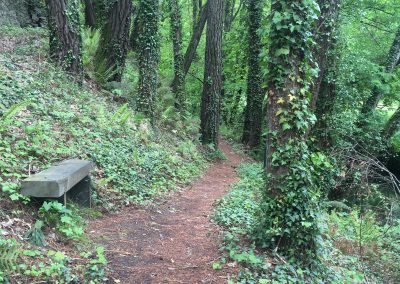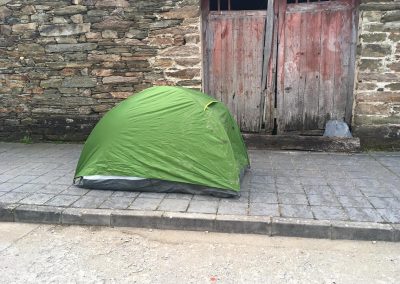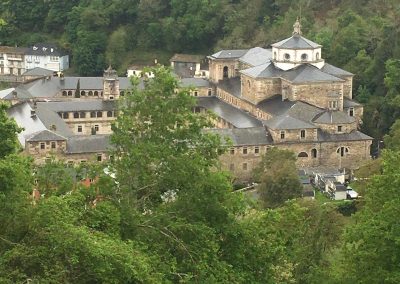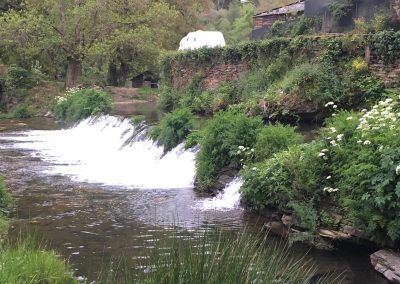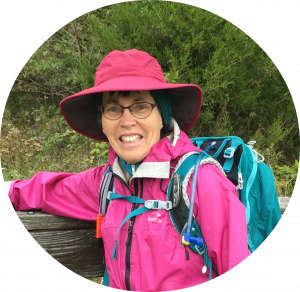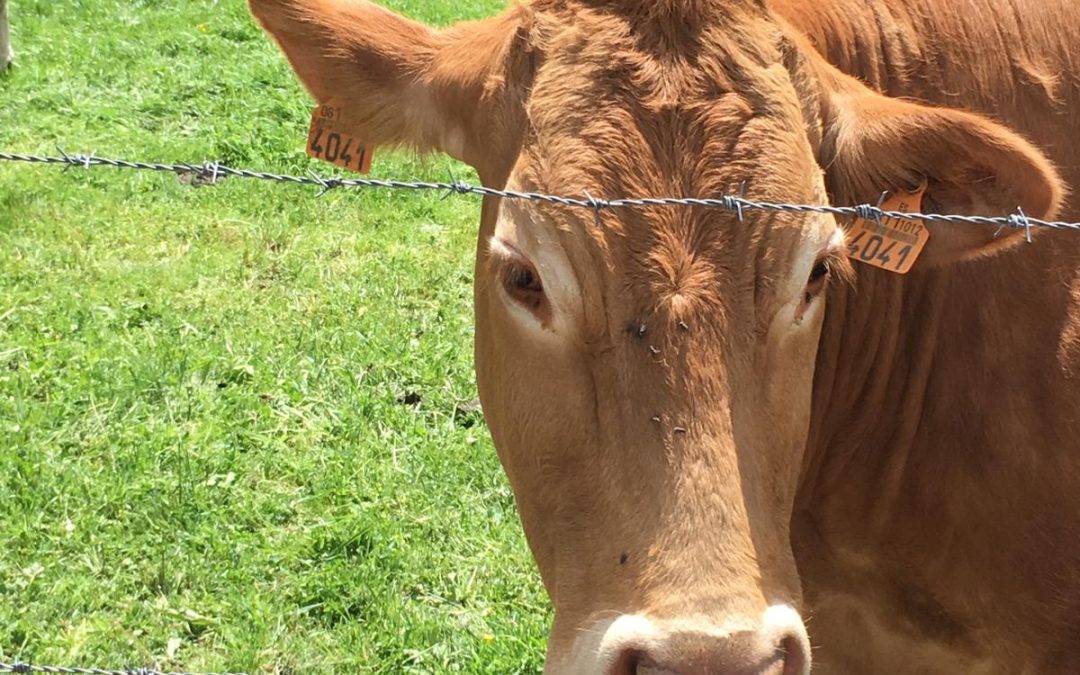
Give it up for the birds
Day 32, Friday, May 10: Samos to Morgade (29.3 km, 18.2 miles)
Come on, put those hands together. The birds went above and beyond today! They got my attention and applause, for sure! Hopefully you’ll be able to catch some birdsong in my videos. Even allowing for the fact that the birds’ best singing is heard before I start recording or just after I push stop, I still caught some lovely musical interludes. Yes! Put those hands together and give it up for the birds!
[Note: I came up with the title for this post and jotted down the towns and the distance, as shown above, shortly after arriving at my destination. The remainder of the post is being written four days later, in the wee hours of the morning. I’m grateful to re-read the notes I took as I walked that day. They help bring the memory of the walk back to me, as do the photos and videos. The details are coming back and put a smile on my face as I relive the day and “get it down” for posterity.]
I never did get the “possible roommate” last night, so I was able to turn the light on when it suited me and get out the door just shortly after 7:00 am. I often walk to the first or even the second little pueblo for breakfast, but fortunately I followed my instincts this morning and stopped for a croissant and a coffee before moving forward. Good thing! It was hours before I would have found a place to remedy hunger! As it was, quick breakfast behind me, I was just on the outskirts of Samos when four women passed me at 7:30. They were soon out of sight and from then until 9:58, when a gentleman whizzed by me, I didn’t see a soul. It was just me and the birds, some cows, a few horses, many trees, rolling hillsides, babbling brooks, and enough stones and mud to force me at times to take great care in placing my feet. Especially as I moved beyond Sarria–more about that in a bit–it occurred to me that were it not for the “nearly mountains” in the background and the huge castaños [chestnut trees] that lined the path, I could almost feel like I was in southwestern Wisconsin. If my description doesn’t have you wishing you were there with me, then I haven’t done the area justice (or… or you are just not an outdoor kind of person).
Perhaps you have seen one of my slug photos? Another reason to watch where I placed my shoes: in a matter of about 20 feet, I spotted three of the good-sized, intricately-patterned black fellows. (Perhaps some among you would give them a different, more accurate name? “Slug” is the best one I know to use.)
Just thinking out Dowd*
So yes, a lot of time to drink in the sounds and sights and think about “life.” One thought leading to another. Frequent stops to commit those thoughts to writing. And now, to sharing.
Thinking about those birds: there is no way anyone can convince me that the birds aren’t filled with joy as they sing to greet the new mornings, thrilled to be alive for another day. And this, even though the bulk of their day may actually be spent flitting from here to there in search of sustenance. We might call that “work” or “drudgery” or “ho hum, here we go again.” The birds have a “let me have another go of it, ‘cuz I can hardly wait” attitude.
That brings to mind Emily from Thornton Wilder’s beloved play Our Town and that poignant scene in the cemetery where Emily, now dead, begs for a chance to go back and relive just one ordinary day, but relive it paying full attention to how extraordinary the minute details of ordinary life can be. When allowed to choose one such ordinary day and place herself in it, she is, of course, very frustrated with her inability to communicate to others how very special each moment is. Remember how the play’s narrator agrees with her that people just don’t understand and appreciate life? Some few do, he suggests. Poets and philosophers, maybe.
And that sets me to wondering about what life was like for Lazarus after he was given a second lease on it. Or for Jairus’s daughter. Or the widow’s son. And, for that matter, for the ones who were in the process of mourning the deaths of their loved ones: Mary, Martha, Jairus and his wife, the widow. Did they come to a new sense of joy with the dawn of each “extra day” they were given? A new appreciation for the ordinary daily tasks of life? Or did tedium take over again after a while?
This was not, by anyone’s standard of measure, an easy day. It was the longest hike I had done in weeks, and by the time I reached the village I had climbed close to 200 floors (and so, later in the evening, I went out for a walk, heading in the direction of the next village, returning to the albergue with 206 floors and over 19 miles for the day, making it, I believe, my longest day to date.). So, easy? No! At one point, I took out my phone (aka: my “notebook”) to jot down how happy I was to be walking rather than riding a bike, when I see, approaching me, a cyclist in the process of dismounting. I was soon in conversation with Santiago from Argentina who was headed to “meet” Santiago the Apostle in Santiago. He was glad to walk along for a while and admitted that were it not for the time crunch he would be walking as well. Santiago had begun on April 29 in St. Jean Pied-de-Port and expected to complete his Camino within another day and a half. At one point, I shushed Santiago. “Listen! Do you hear that?” It was the cuckoo bird! It had been days since I’d heard him, but there he was, over and over again, accusing us of folly! I tried to record his call, but when I later watched the video with the volume turned high, there was no cuckoo bird to be heard. Santiago was my witness, though; the cuckoo lives!
Santiago had miles to go before his day would be over, so I sent him off, wishing him well, and I again thought to myself how grateful I was that it hadn’t occurred to me at any point to rent a bike to continue my journey.
*Some of you know that my maiden name was Dowd and that my dad was a fabulous, funny, and prolific letter writer. Back in the late 50s he had some stationary printed up with the letterhead “Jest thinking out Dowd.” I’m happy to appropriate his gimmick, although changing the “jest” to “just” in consideration of the types of thoughts I was having. Dad also had stationary printed with this across the top: “No Dowd about it.” He sure had fun with words!
Sarria and beyond
The town of Sarria is 112 kilometers from Santiago. Pilgrims who walk at least 100 kilometers (or who bike at least 200) prior to reaching the cathedral in Santiago and who have the appropriate documentation–the credencial/pilgrim’s passport with its sellos/stamps–qualify for receiving the treasured Compostela certificate. Sarria is a good-sized city and is very much given over to the tourist/pilgrim business because so many people begin their pilgrimage there.
Can you understand why I was dreading it? The guidebook cautions us to be kind in thought and in deed when we come upon those just beginning their pilgrimage journey in Sarria. We are warned that the Camino from here on will benoticeably more crowded and considerably noisier. More commercial. A buzz in the air that no longer harmonizes with the melody that the long-time-on-the-road pilgrim is singing.
And so: I moved through the town as quickly as possible. I stopped in the very attractive 13th-century Iglesia del Salvador and, from the same period, the Monasterio de la Magdalena with its lovely, refreshing cloister walk and patio. I picked up a new credencial because the one issued to me back at the beginning had only a few spots remaining for the sellos I needed to collect to confirm my completion of the final 100 kilometers. But I was anxious to get out of the “maddening crowd,” so I picked up bread, cheese, and chorizo in a little grocery store in hopes of finding a good picnic spot somewhere down the trail.
And I did find a lovely spot! There’s a photo of my backpack hanging on a castaño on the side of the trail, and of the huge bocadillo I was about to consume.
The day had gone quite, quite differently for Ginny, and was about to change for me as well. To explain: I was so pleased with my lunch spot and with my sandwich that I wanted to share the photos immediately with the family. I turned on my data in order to do so. Oops, not good enough reception to be able to send anything. However, I could see evidence that Ginny had tried to call me via WhatsApp. And not once, but over and over and over again.
This is not good! We have not called each other once on the entire trip. Text messages have met our needs just fine. Something was wrong and I couldn’t find out what it was from my out-in-the-boonies location.
Nor did Ginny answer my call when I got within calling range.
I kept moving forward, many scenarios–none of them good–going through my head.
It was only when I reached my destination for the night that a text from Ginny came in letting me know that she had been taken by ambulance in the early hours of the morning to the university hospital in Santiago and that she was now in recovery after surgery for an ischemic bowel. Holy cow!
Trial and error until we finally connected by phone (turns out the albergue was in a really low spot: I had to climb up out of the hamlet to receive/make phone calls). It’s now 5:00 pm.
Long story short: I gathered the available information for schedules of busses leaving from Sarria or from Portomarin, each a journey of approximately 10 kilometers from where I was lodging for the night. I had walked some 29 kilometers already that day; I didn’t have 10 more in me, nor, even if I did, the time to catch the evening bus. And what time would I have to leave in the morning to walk to either town to catch the only Saturday bus–leaving one of the towns at 8:50 am and the other at 9:15–to Lugo where I would be able to get on a bus to Santiago? Too early!
Albergue to the rescue. “That morning bus,” the oldest of the women at the hostel explained (in Spanish, of course), “it will pass by the highway a few kilometers from here as it travels from Sarria to Portomarin. There is a place along the road where it will stop if you flag it down. You go there in the morning. If you are there by 8:50, that is good. You wave and it will stop.” When I asked for directions to get to that spot, she assured me that someone would drive me in the morning, that if I were in the lobby at 8:30, someone would drive me.
And so there was nothing more I could do that night. I was hugely entertained during dinner by an 11-month-old baby at another table who absolutely loved the waiter and his antics. A good distraction. As was the evening walk I took up towards the next village. Marveling that a car would actually be able to drive this little lane to “get me to the bus on time.” (Truly: in the 6 or 7 kilometers I had spent on the road leading to Morgade earlier in the day, I don’t recall seeing any cars on it.)
By the time I posted the “flashing news” about Ginny to all of you, my five roommates were fast asleep. I soon joined them.
The following morning
We’ll give a quick recap of Saturday morning. Sure enough, one of the daughters of the woman who promised that “someone” would take me to the bus stop was indeed available at 8:30 to do just that. And off we went. Three or four kilometers maybe. A lot faster than walking, for sure. She dropped me off at a sort of intersection with absolutely nothing noteworthy to indicate it was a place where a bus would stop. But oh well. Stranger things have happened. I expected to have about a ten-minute wait. So a good ten minutes go by and along comes a car from the side road, the one down which I had traveled to get to the stop. It was the daughter again!
“The bus hasn’t come by?” “No, not yet” I respond, thinking: would I still be here if it had? “Get in quickly,” she tells me. “When I got back my mother asked me where I had dropped you, and when I told her, she said it was the wrong place. We’ll go there now. Get in.” Backpack, poles, body back in the car. Me thinking; And if we cross path with the bus as it travels in the opposite direction? What do we do then?
Fortunately, that did not happen. She brought me another kilometer or two closer to Sarria, dropped me off, and within five minutes the bus came around the corner and pulled into a lane marked “bus” on the side of the road.
From there through some pretty countryside to the city of Lugo. Find schedule for the bus times for Santiago, buy ticket, wait about an hour. I’ll be in Santiago by 1:30. Could have been much worse.
The bus from Lugo to Santiago went through several larger towns through which the Camino would also pass. As I looked out the bus window while going through the towns, I saw pilgrim after pilgrim after pilgrim. I’m sure that in between the towns the Camino passes through some pretty areas, but it was a bit disheartening to me to see the “crowds.” When would I be “one more pilgrim” again?
For the moment, though, I had enough to think about. Arriving in Santiago. Getting from the bus station to the albergue Ginny had previously reserved for herself for that night. Dropping my pack off there and finding my way to the hospital….
Don’t worry. “Consider the lilies…”. And the birds. Let’s have another round of applause for the birds who remind us each morning that all is well! Then, when we’re all clapped out, time to start behaving and living as they do. Except maybe not so much public pooping!

